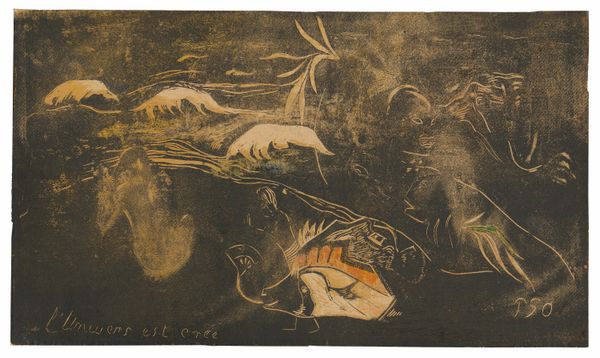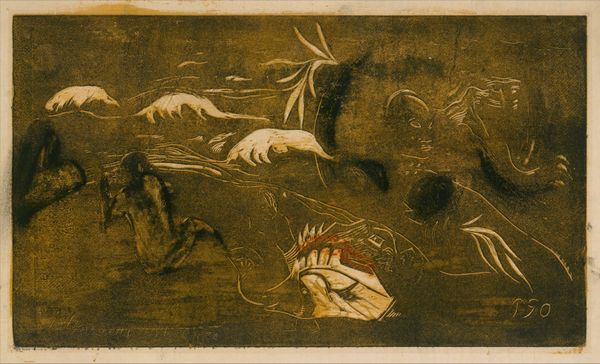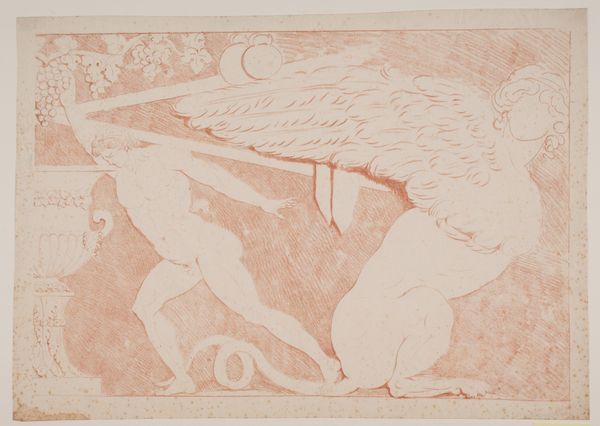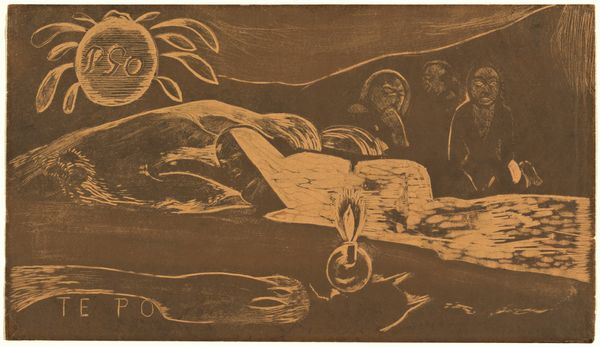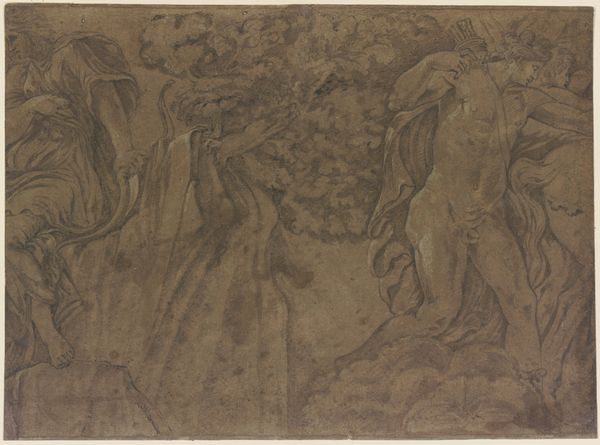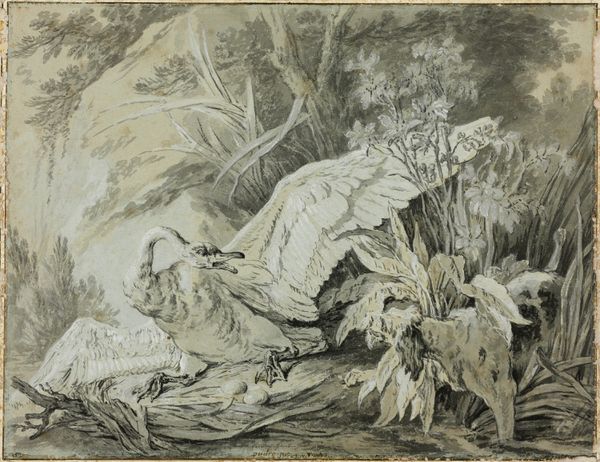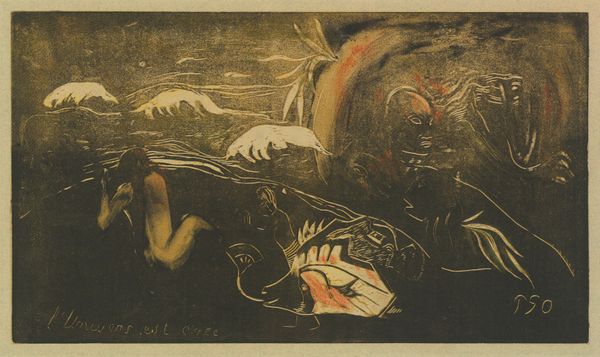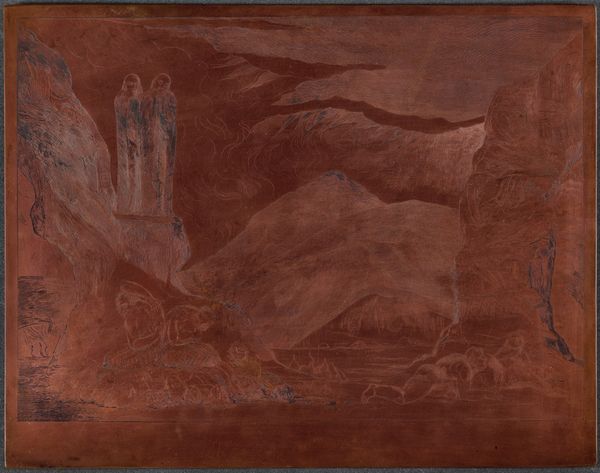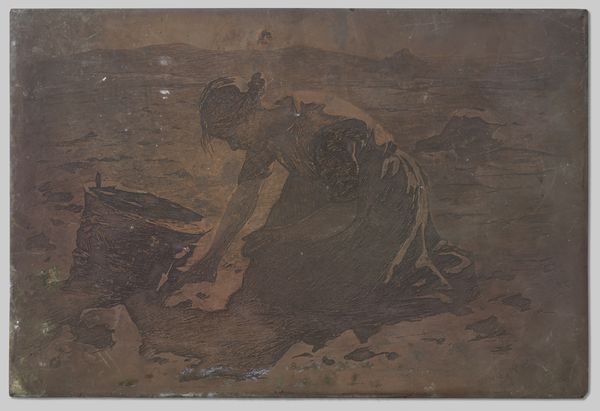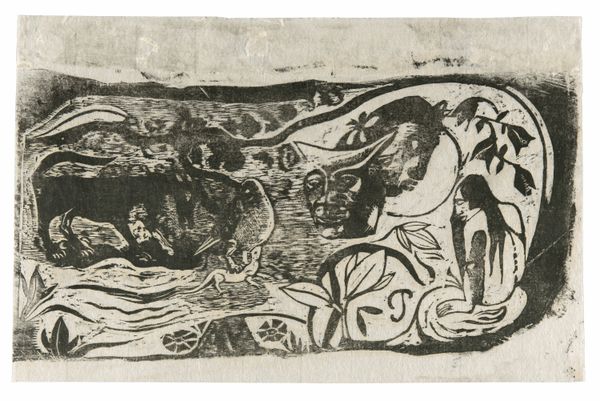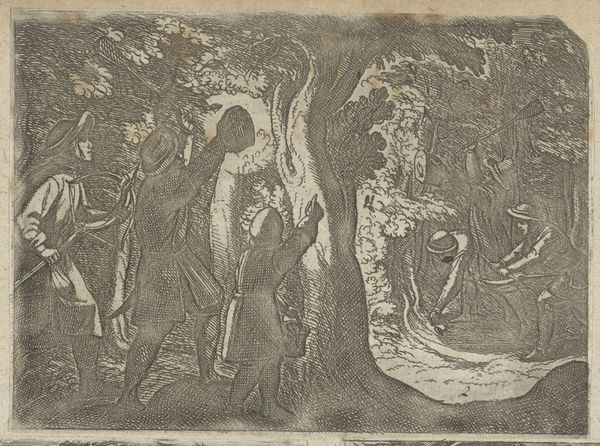
drawing, print, etching
#
drawing
#
narrative-art
# print
#
etching
#
figuration
#
symbolism
#
post-impressionism
Dimensions: 8 x 13 7/8 in. (20.3 x 35.2 cm): block 10 1/2 x 18 7/8 in. (26.7 x 47.9 cm): paper
Copyright: Public Domain
Editor: This is Paul Gauguin's etching, "The Universe Is Created," made around 1893-94. The sepia tones give it such an aged, almost primordial feel. How do you interpret this work? Curator: From a materialist perspective, the act of etching itself is crucial here. The physical labor of carving into the metal plate, the layering of ink, and the pressure of the printing press – these are all active participants in "creating the universe." Consider how this process democratizes art, moving it away from singular masterpieces to reproducible images, challenging traditional hierarchies. Editor: I see your point. So, rather than just depicting creation, the creation *is* the process? The tools used also matter? Curator: Precisely. What about the consumption? How did the emerging market for prints influence the content? Did the ability to sell multiples change Gauguin's subject matter, pushing him toward themes that resonated with a broader audience seeking exoticism and spirituality? Note his conscious use of primitivism and orientalism within the European historical context. Editor: It’s fascinating to think about how the material process shaped not just the artwork but its market as well. Thinking about who had access to prints like this really does shift the way you look at the image itself. Thank you for sharing! Curator: And thank you. Reflecting on these print-making practices gives new context for the cultural values embedded in "The Universe Is Created."
Comments
No comments
Be the first to comment and join the conversation on the ultimate creative platform.
